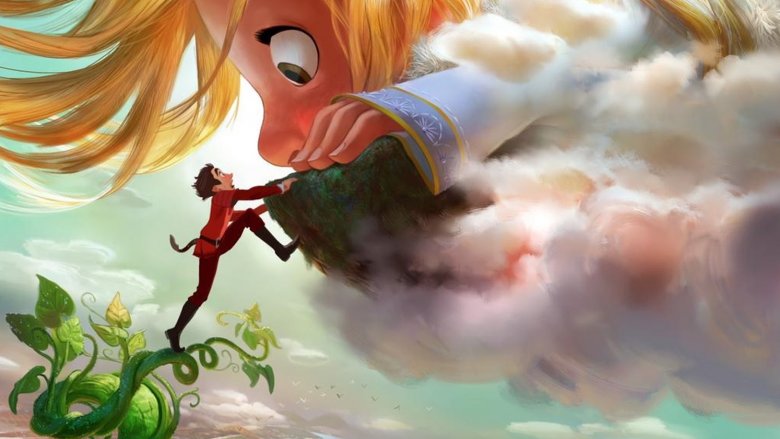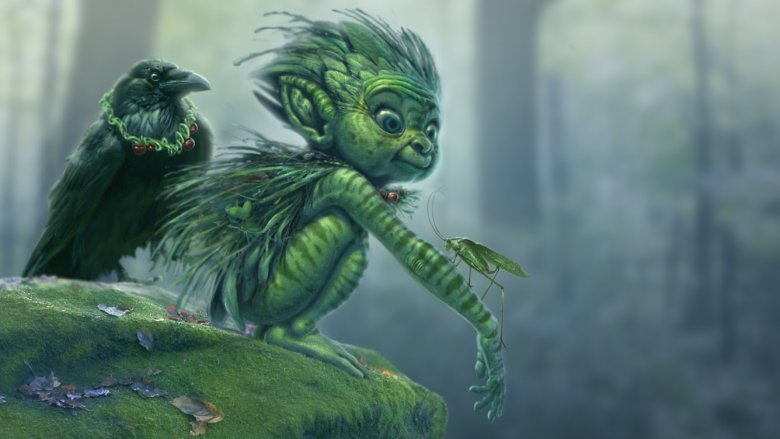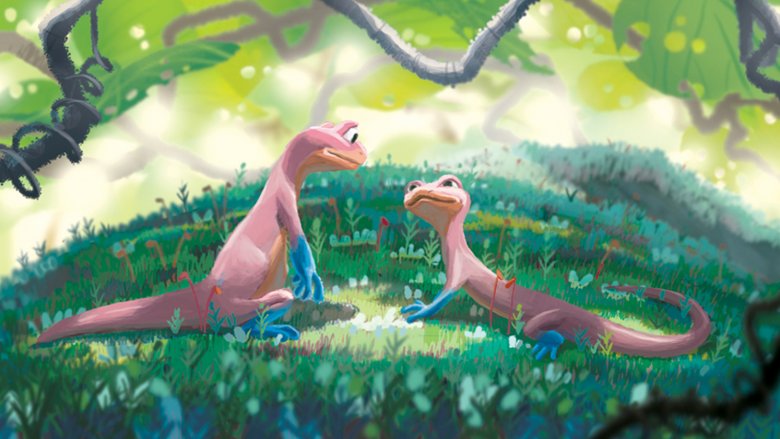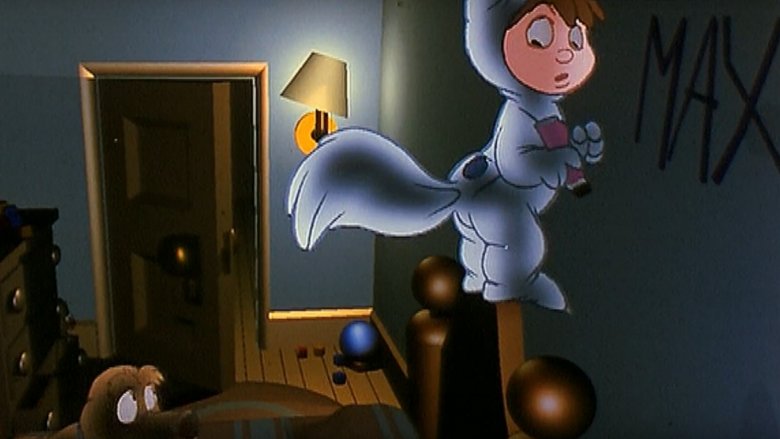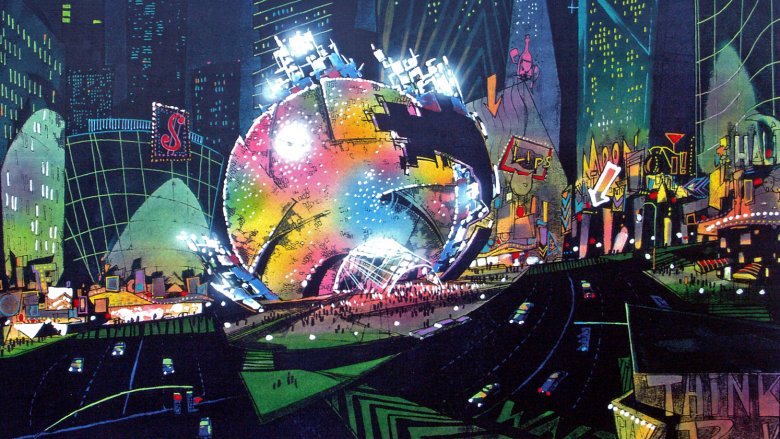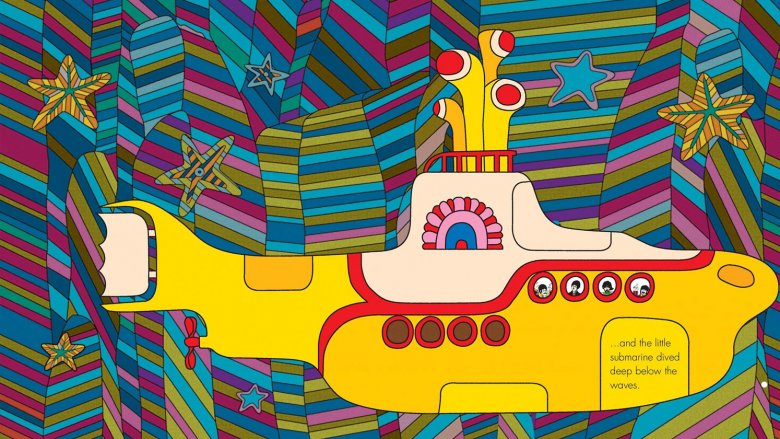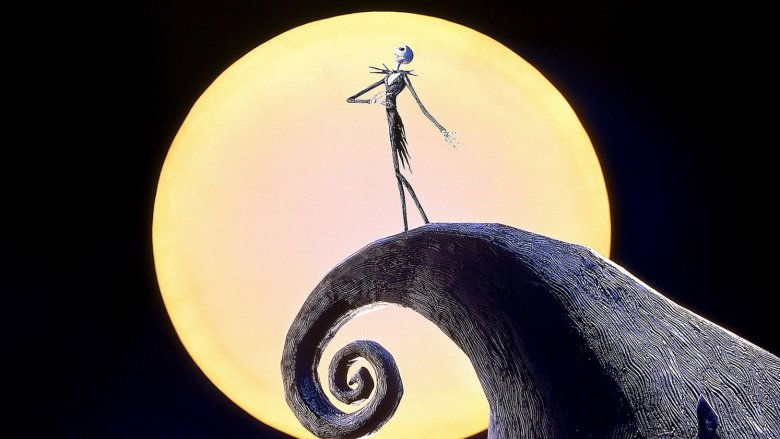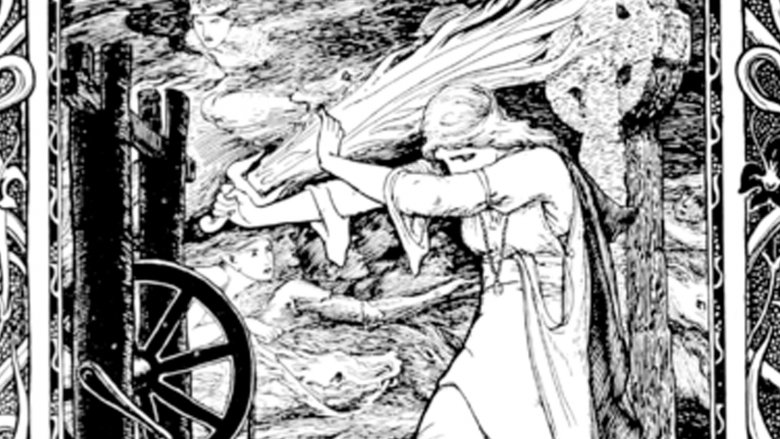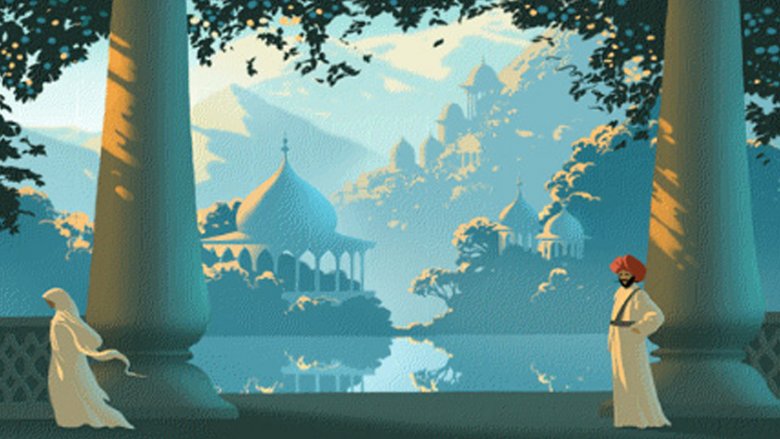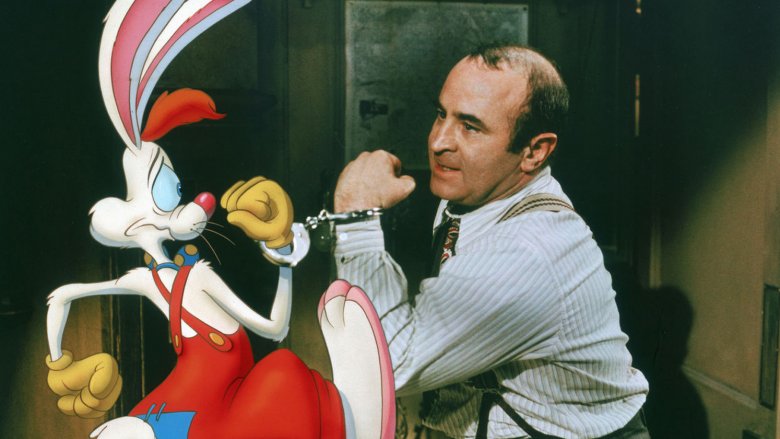Disney Movies You'll Never Get To See
We may receive a commission on purchases made from links.
Even the best-laid plans often go awry—a saying that's especially true when it comes to filmmaking. Movies sometimes languish in development hell for years before making it to the big screen, and many more end up canceled somewhere along the way. This holds true even at Disney, where the costs of traditional or computer animation can spell doom for a troubled production.
Some of these projects do end up getting reworked and eventually released—for example, The Kingdom of the Sun was completely retooled as The Emperor's New Groove, while The Snow Queen was rewritten and later found blockbuster success as Frozen. Dozens more have just been scrapped entirely because of various issues during development. Here's a look at some of the most intriguing projects Disney has shelved over the years—and the reasons why audiences are unlikely to ever see them.
Gigantic (2020)
Following the Disney tradition of drawing from classic folk stories, Gigantic was planned as a retelling of the English fairy tale "Jack and the Beanstalk." The Gigantic version was to be set in Spain during the 15th or 16th century, and would have featured the archetypal Jack meeting and befriending Inma—a "fiery and feisty" 11-year-old giant girl. Additionally, there were going to be some big bad guys in the tale: the 120-foot tall "Storm Giants." This wouldn't have been the first time that Disney had tackled the classic story; in 1947, the studio released the war-era package film Fun and Fancy Free. That movie included two musical animated shorts, one of which was the popular Mickey and the Beanstalk.
Gigantic was announced with fanfare at the 2015 D23 Expo, and it seemed the project was already well underway; Tangled director Nathan Greno was on board to lead the film's development, later joined by Inside Out screenwriter Meg LeFauve. Husband-and-wife songwriting team Robert Lopez and Kristen Anderson-Lopez were to write the score—no doubt hoping they could recreate the magic and commercial success they captured with "Let it Go" and the rest of the Frozen soundtrack.
Originally slated for a 2018 release, Disney announced in April 2017 that they were pushing Gigantic back to 2020—giving the Wreck-It Ralph sequel the 2018 slot instead. Apparently, even two extra years of development time weren't enough; just six months later, Walt Disney and Pixar Animation Studios president Ed Catmull told Variety that Disney was "ending active development" on Gigantic—instead focusing on a new (and unspecified) project in the works, which is "now set for Thanksgiving 2020."
King of the Elves (2012)
Legendary science fiction author Philip K. Dick's novels and short stories have long been a favorite of Hollywood studios—Blade Runner, Minority Report, Total Recall, and A Scanner Darkly (to name just a few) were all based on his written works. Disney jumped on the bandwagon in 2008, when they announced that they were planning on creating an animated feature based on The King of the Elves, a fantasy short story written by Dick in 1953. King of the Elves was originally slated for a late 2012 release, and Brother Bear directors Aaron Blaise and Robert Walker were to direct.
It's unclear exactly how far production got. By December 2009, the project had been put on pause—and Blaise left Disney in March 2010 to lead the new Florida animation studio opened by Digital Domain. A couple of years later, Blaise shared some of the amazing character concept artwork he'd created for Disney and the King of the Elves project. After Blaise's departure from Disney, the production lay dormant until June 2011—when Bolt co-director and writer Chris Williams was tapped to revive King of the Elves, with a proposed Holiday 2013 premiere. According to Angry Birds director Clay Kaytis (who worked with Williams on Bolt), Williams eventually left the Elves project in order to work on Big Hero 6. Disney Animation Studios later removed the King of the Elves page from their website, so it's pretty safe to assume that the movie has been shelved indefinitely.
Newt (2010)
Along with King of the Elves, Disney revealed a number of their upcoming projects in a 2008 press release—including the proposed Pixar animated films The Bear and the Bow and Newt. While The Bear and the Bow eventually found its way to the big screen in 2012—retitled as Brave—the production of Newt was much more troubled. Originally planned for a 2011 release, Newt was to tell the tale of the last remaining male and female blue-footed newts, forced together by hopeful scientists in order to save their species—only to discover that they can't stand each other.
If that plot sounds familiar, that's because it's essentially the storyline found in the 2011 Fox animated feature Rio. After finding out that Fox had beaten them to the box office with the very similar tale, Disney/Pixar canned their plans for Newt. In a 2011 interview with IGN, Chief Creative Officer John Lasseter acknowledged that the parallels between the two films were behind Newt's cancellation. "Its story was very similar to a movie that's out in theaters right now with a blue parrot," Lasseter explained. "Great minds think alike, I guess."
Where the Wild Things Are (1983)
Speaking of John Lasseter, in the '80s when he was just an animator at Disney, he helped explore the new technology of computer-drawn animation. At the time, Disney owned the rights to Maurice Sendak's classic children's book Where the Wild Things Are, and had been considering adapting it; Lasseter began working on a short CGI featurette—designed to be a test of the burgeoning new computer technology. At the same time, he was pushing heavily for the studio's upcoming The Brave Little Toaster project to be made with a hybrid of traditional and computer animation methods.
Lasseter apparently stepped on a few toes at Disney with his pitch for the Little Toaster project, and the plans were scrapped (the film was later made by a different studio using traditional 2D animation techniques). At the time, executives at Disney weren't interested in using computer technology unless it could make the production process faster or cheaper. According to Lasseter, he was called into Ed Hansen's office right after his pitch—where he was unceremoniously fired by the animation department manager. Lasseter moved on to work at Lucasfilm and Pixar, before returning to Disney as their chief creative officer. Disney eventually lost the rights to Sendak's book—which was eventually turned into a live-action/CGI film by Warner Bros. in 2009. At least we can be thankful that Lasseter finished his animated Wild Things featurette before being canned by Disney—and that it later managed to make its way onto YouTube.
Wild Life (2000)
You may have heard of George Bernard Shaw's play Pygmalion, but you're likely more familiar with some of the popular adaptations of the tale—like 1964's My Fair Lady starring Audrey Hepburn, or the more modern take presented in 1999's She's All That. In the early 2000s, Disney's "Secret Lab" developed their own version of Shaw's tale—an animated feature film called Wild Life. The details of the proposed plot are sketchy, but the movie was to be a modern and urban interpretation, in which an elephant named Ella becomes an instant celebrity in the New York City club circuit.
Legendary Disney artist Hans Bacher worked on the ill-fated project for two years, and he shared some of the concept and character art for Wild Life in his 2007 book Dream Worlds: Production Design for Animation, as well as on his personal website. According to Bacher, Wild Life "would have been an incredible movie," but it was plagued with "major story problems." Disney expert and historian Jim Hill later revealed that the dialogue was peppered with adult humor, and an off-color joke (involving two gay characters talking about a manhole) upset Roy E. Disney so much during an early test screening that he immediately pulled the plug on the project for good.
Yellow Submarine (2011)
In the late 2000s, Disney floated plans to develop a motion-capture remake of Yellow Submarine, the acclaimed 1968 animated musical comedy film based on the music of the Beatles. Robert Zemeckis (Back to the Future, Who Framed Roger Rabbit?) was supposed to develop the remake, but the film experienced numerous setbacks along the way. The proposed deal included plans for a companion Broadway musical, and Disney confirmed the project was underway in September 2009—with Apple Corps Ltd. also expressing their support. Despite all the hype, The Beatles Yellow Submarine Disney Digital 3D would never get off the ground.
As Blake Goble at Consequence of Sound later pointed out, Zemeckis' dedication to the imperfect motion-capture techniques used in his previous films—like The Polar Express, Beowulf, and A Christmas Carol—probably contributed to the downfall of Yellow Submarine. The motion-capture method was expensive, and the results were frequently disappointing at the box office and on the screen—where the not-quite-human characters often triggered "uncanny valley" heebie-jeebies among audiences and critics.
That wasn't the only problem. According to The Hollywood Reporter, the Yellow Submarine project suffered from "budget issues, and a key presentation Zemeckis was to have made before the Beatles heirs kept being pushed back." When Zemeckis' next motion-capture project Mars Needs Moms flopped spectacularly at the box-office in 2011, Disney cut both Zemeckis and his Yellow Submarine project loose. Although was free to take the film to another studio (if he could find one that would take it), Zemeckis later decided not to move forward with the remake—instead turning his attention to a proposed Who Framed Roger Rabbit? sequel with Disney.
The Nightmare Before Christmas 2 (2001)
After the unexpected success of The Nightmare Before Christmas in 1993, Disney was eager to capitalize on the film's widespread acclaim. Originally released under Disney's Touchstone Pictures banner because of the movie's "spooky" content, Disney later fully embraced The Nightmare Before Christmas—re-releasing it in theaters for several years running, putting it out on every form of home media imaginable, and even spending a bundle to digitize the film for a 3D release in 2006.
But those reissues weren't the only plans Disney had for the film. According to director Henry Selick, Disney started floating ideas for a possible Nightmare Before Christmas sequel around 2001. What's more, Selick claimed that studio execs even suggested that "this time it would have to be done in CG," instead of the stop-motion techniques used in the original film. "I'm glad that did not happen," Selick added. It seems that Tim Burton himself (who produced and conceived the tale) shut Disney down on the sequel talk. In a 2006 interview with MTV, he explained, "I was always very protective of [Nightmare], not to do sequels or things of that kind...it's not a mass-market kind of thing, it was important to kind of keep that purity of it." To be honest, a sequel to The Nightmare Before Christmas is one Disney film we're glad we'll never see—The Nightmare Before Labor Day just doesn't have the same ring to it.
Tam Lin (2003)
After his blockbuster success with The Lion King in 1994 and his equally successful Broadway musical version of the film, director Roger Allers turned his attention to a new Disney production. The Kingdom of The Sun was his pet project, but after conflicts with co-director Mark Dindal and other Disney execs over the story and direction of the movie, Allers ended up making the "heartbreaking" decision to leave the production—which was retooled and released as The Emperor's New Groove in 2000. Allers turned his attention to Lilo and Stitch, and began to develop a new story pitch based on the ballad of Tam Lin.
The traditional folk tale revolves around the romance between Janet and Tam Lin—a mortal man who was captured by the Queen of Fairies. Janet must endure a number of trials in order to rescue her love from the Fairies before they sacrifice him in a magical ritual. Allers developed the pitch "for Roy Disney, who was eager for an Irish tale (as was I)." Ultimately, the internal politics at Disney Studios during this era kept Tam Lin from ever being developed; according to Allers, "Michael Eisner and Roy Disney...were engaged in a struggle of whose vision for the company would prevail."
Because of this conflict, Eisner supposedly turned down the Tam Lin idea to get at Roy Disney. "When I pitched it to [Eisner], he rejected it because of its Irish-ness (knowing that it was Roy's baby)," Allers explained. Although Tam Lin was later picked up by Sony Pictures Animation in 2003, Allers said the team at Sony "could not seem to agree on an approach after two years of development work," and all plans to develop the picture were scrapped.
The Emperor and the Nightingale (2002)
Disney has long turned to the fairytales of Hans Christian Andersen and others to inspire their animated and live-action films. One of these tales, The Nightingale, was first floated as a possible Disney adaptation in the 1940s. Since then, numerous attempts to get The Nightingale to the big screen have all fallen flat—although Disney did manage to put out a children's book adaptation (starring Mickey Mouse and using some of the concept artwork for the aborted film versions) in 1992.
In the late '90s, the project was revived at Disney under the title The Emperor and the Nightingale. Robert Reece was developing the script for the traditionally animated film and Randy Haycock was directing, while Colin Stimpson and Mike Gabriel worked on developing the visual art and character creation. You can see some of Stimpson's concept art for the movie (which was to be set in India) on his website. The Emperor and the Nightingale was reworked as a computer-animated project in the spring of 2003, but less than six months later the project was shelved yet again—this time, indefinitely.
Who Framed Roger Rabbit Sequel (1990-2017)
As mentioned previously, director Robert Zemeckis took his Yellow Submarine remake defeat in stride, and turned his attention to developing a sequel to Who Framed Roger Rabbit for Disney. This wasn't the first time a continuation of the franchise had been discussed; a direct-to-video sequel was axed in the early '90s, as was a proposed prequel set in 1941.
Zemeckis seemed to have both Disney and original Roger Rabbit star Bob Hoskins on board for his sequel, but then Hoskins was forced to retire from acting due to his ill health and sadly passed away in 2014—which seemed to spell the end for any talk of a Roger Rabbit sequel. Never one to admit defeat, Zemeckis claimed in 2016 that he had a "terrific" script in place, and that while it would be "very hard," they "would do a digital Bob Hoskins" in the film. Before you get too worried about what Robert Zemeckis plans to do to Hoskins' legacy, rest assured that it's extremely unlikely Disney will ever make this picture—and Zemeckis knows it. "The current corporate Disney culture has no interest in Roger, and they certainly don't like Jessica at all," he admitted.
